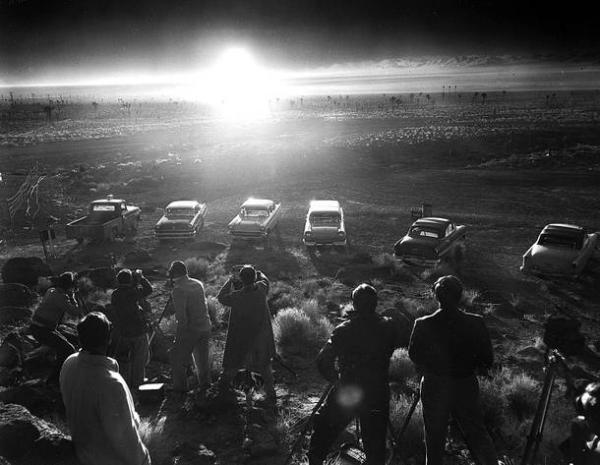
“We used to get up in the morning, drive out to the highway and watch the blast. There was a regular caravan of cars going out. We’d park on the side of the road, wait until it was all over, go home, have breakfast, get the kids off to school and then go to work.â€
That’s how Gail Andress remembers the nuclear testing 65 miles northwest of Las Vegas in the early 1950s. He and his wife Donna, now both in their 80s, regularly watched the much-celebrated detonations that could be felt as far away as Los Angeles. There were blinding flashes, multi-kiloton fireballs, mushroom clouds and subsequent bursts of air skirting outward. The explosions became a tourist draw, and cars rolled in from far away to witness them.
“It was absolutely brilliant,†Andress says. “It looked like the sun come up again. It lit the whole area. We were assured there wasn’t going to be a problem. It was real interesting. It was an attraction.â€
But for Dennis McBride, then a child growing up in Boulder City, it felt like the end times. Governments were building, testing and stockpiling weapons designed to annihilate cities. It was a lot for a fourth grader to digest.

Photo: Las Vegas News Bureau
In a 1950's photo from the Las Vegas News Bureau, photographers are seen lined up to shoot the detonation of a bomb at a Nevada test site.
“Not only did I know what was going on at the Test Site, this was the height of the Cold War and Duck and Cover drills,†remembers McBride, now a local historian. “It’s so hard to even articulate, being instilled with the sense that at any moment your life could come to a horribly frightening, bloody end.â€
Locals’ reactions to the decimation going on outside of town varied wildly. They were entertained, concerned, terrified, curious and even disinterested, but through it all, they were assured by the government they were in no danger.



although then no one knew it was dangerous.